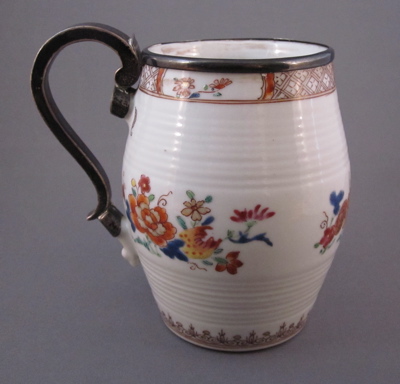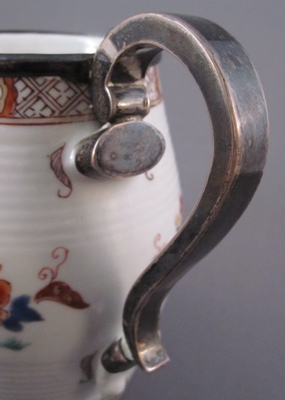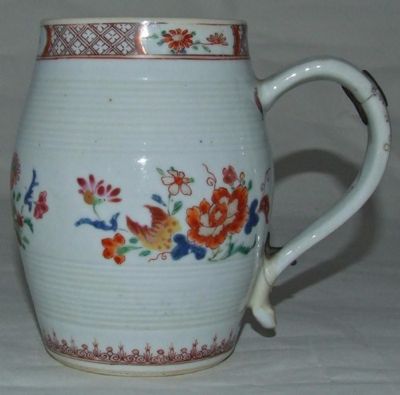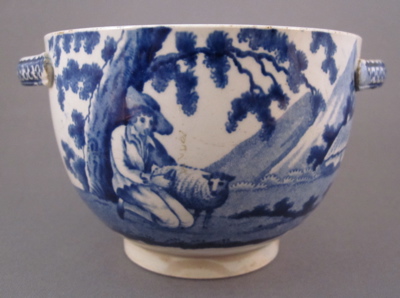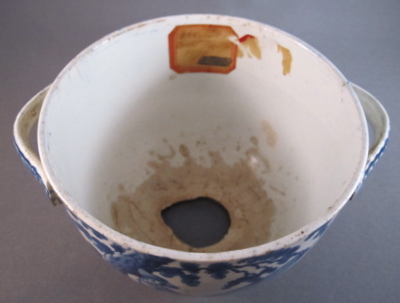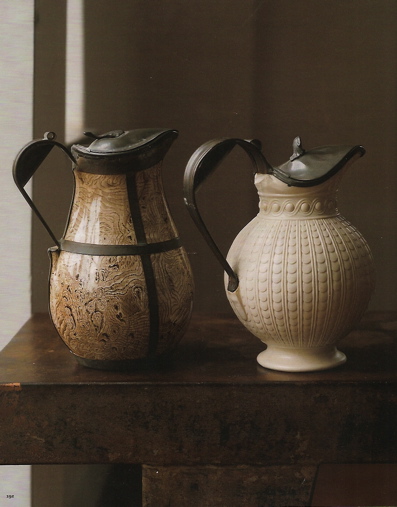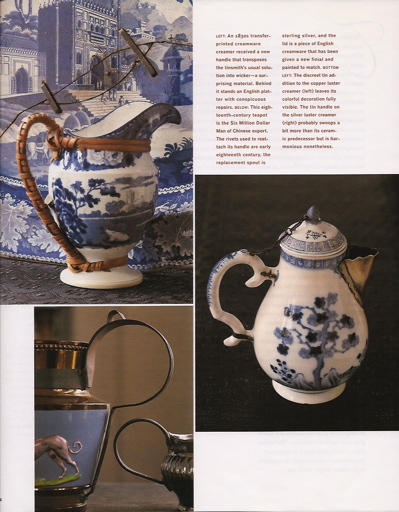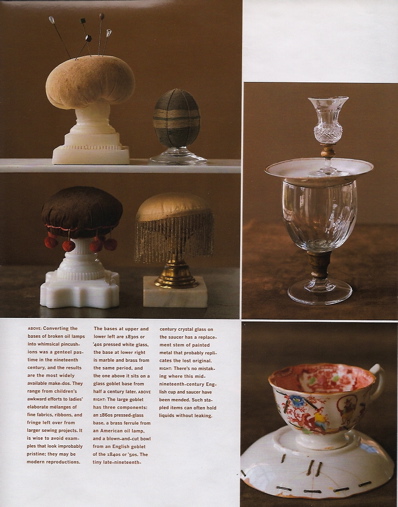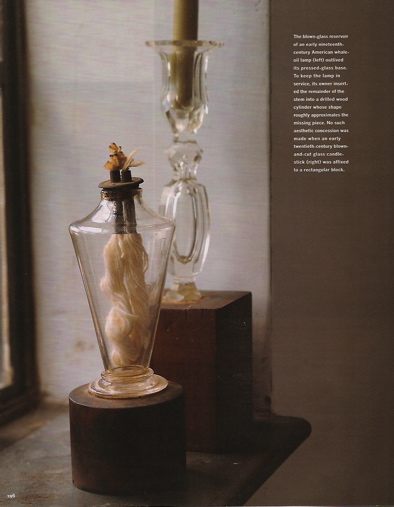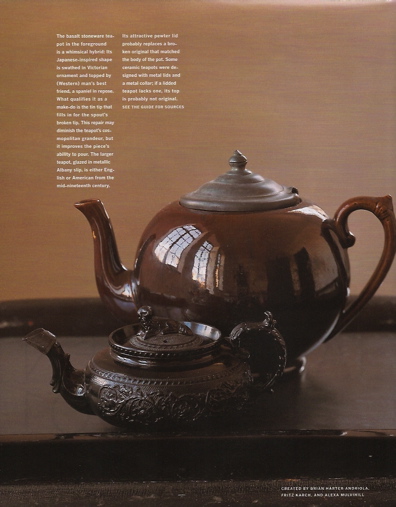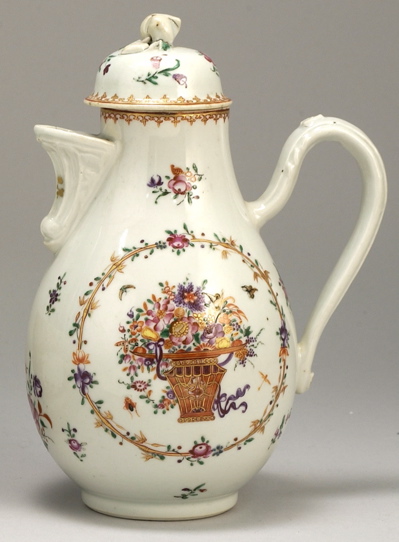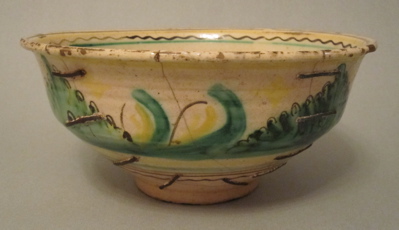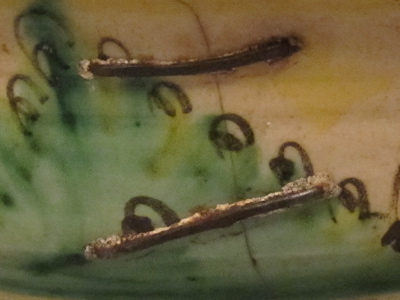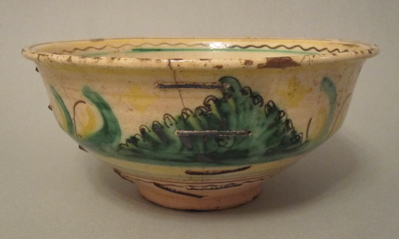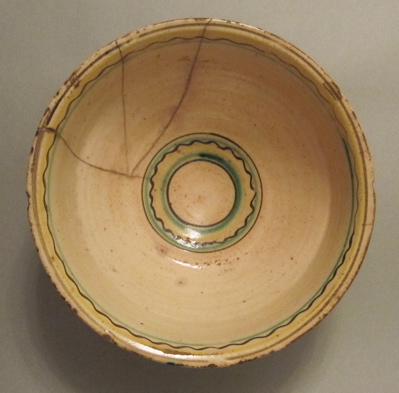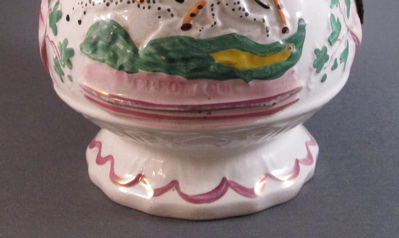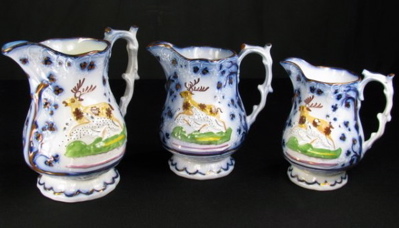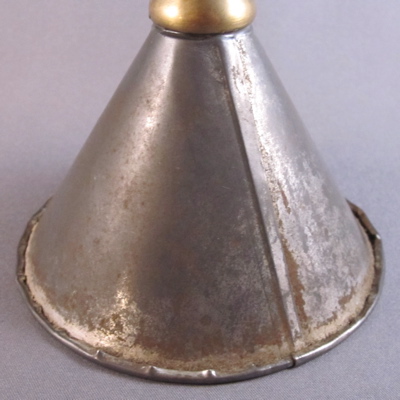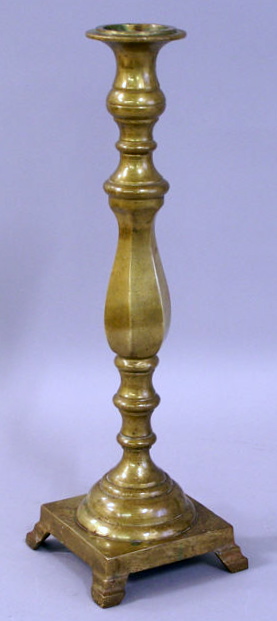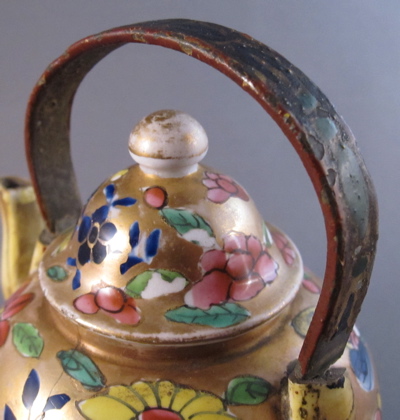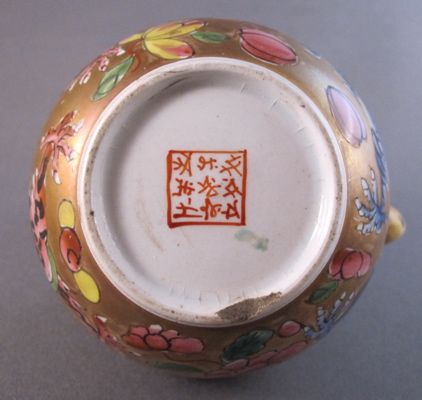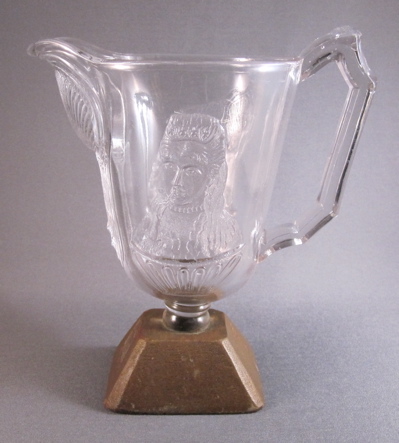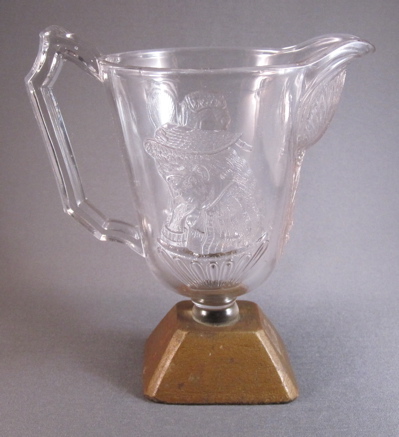This Chinese export ribbed barrel form mug is decorated in the Imari style with polychrome enamel and gilding. Chinese Imari porcelains are copies of popular Japanese Imari pieces of the mid 17th to early 18th century and were made for export to Europe and North America
Rim is decorated with an alternating diaper & floral spring design
Mug measures 4-3/4″ high and has a 2-3/4″ diameter opening
The replaced silver handle & rim were exquisitely crafted by an experienced silversmith and I only wish they left their hallmark. It is some of the finest silver work I have seen on a repaired item. Porcelain handle fragments enable the new silver handle to be mounted, in the same manner as a crown is attached to the remains of a tooth
This mug, identical in form and decoration to mine, still has its original handle. But it too has been repaired, this time using metal staples to hold it together. There seems to be a design flaw as the delicate handle couldn’t support the weight of the heavy mug…especially when filled with ale.
Photo courtesy of eBay


